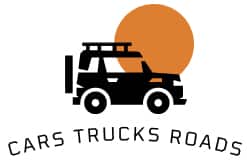
Planning your travel during the 4th of July can be pivotal for a trouble-free Independence Day journey. In this article, we’ll identify the high-traffic periods, which you might consider bypassing. In addition, we’ll showcase how you can employ technology to elude these traffic jams. With these insights at your disposal, you can strategically plan your travels, evade potential roadblocks, and wholly relish your Independence Day celebrations.
Record-Breaking Travel Numbers Expected for Independence Day Weekend
The 4th of July weekend is just around the corner, and this year, being a Tuesday, it appears that Americans are more enthusiastic than ever to embark on their holiday trips. According to AAA’s forecasts, there is a significant uptick in travelers this year compared to both last year and pre-pandemic levels.
Around 50.7 million Americans are projected to travel 50 miles or more for the Independence Day celebrations, a figure set to create a new travel record for the holiday. Additionally, domestic travel is witnessing a substantial boost, with an additional 2.1 million people predicted to travel within the country.
Forecasted Traffic Patterns for Independence Day Weekend

Friday, June 30 – The Busiest Day
On Friday, June 30, roads are expected to be bustling with activity. Average travel times are predicted to surge by nearly 30% above normal levels. Specifically, the hours between 10 am and 6 pm are advised to be avoided, especially for travelers from major metro cities like Boston, Seattle, and Washington DC who are expected to face the brunt of these traffic increases. For those compelled to travel on June 30, departure times either before 10 am or after 6 pm are recommended to escape the heaviest traffic.
June 29 and July 1 – Key Times to Avoid
While June 29 and July 1 aren’t forecasted to be as intensely busy as June 30, certain peak times should still be evaded. On June 29, the roads are expected to be most congested between 4 and 6 pm, so the optimal travel period is anytime before 12 pm. Similarly, on July 1, the worst time to travel by car is expected to be around 1 pm. Travelers are suggested to embark on their journey in the morning, ideally before 12 pm, to bypass bustling streets.
July 2 and July 3 – Minimal Traffic Impact
On July 2 and 3, traffic disruptions are projected to be minimal. Travelers on these days won’t have to contend with any particular best or worst times to hit the road.
July 4 and 5 – Post-Celebration Traffic Concerns
Once the festivities wind down, traffic conditions take a turn for the worse. On July 4, it is recommended to avoid driving between 12 and 3 pm. The optimal times to be on the move are before 11 am or after 6 pm. Similarly, on July 5, early departures are advised, preferably anytime before 2 pm, to evade the anticipated peak traffic times of 3 to 6 pm.
Breaking Travel Records by Car and Air
No matter the mode of transport, be it by car or plane, the Independence Day weekend is anticipated to be a record-breaking period. AAA predicts that 43.2 million people will drive to their destinations, marking a 2.4% increase from the same period in 2022 and a 4% rise from 2019. The increase in air travel is expected to be even larger, with projected figures surpassing those of 2022 by 11.2% and those of 2019 by 6.6%.
When to Hit the Road: Understanding Peak Times
Traditionally, the busiest traffic on the 4th of July is observed the day before, during, and after the holiday. The earlier or later you can travel, the less likely you are to get stuck in traffic. Late night on July 3rd and early morning on July 5th tend to be the least congested periods. Therefore, if possible, plan your travel around these times to ensure a smoother journey.
Smart Travel: Using Technology to Your Advantage
In the digital era, technology is no longer just a convenience; it’s a game-changer, particularly when it comes to navigating holiday traffic. With several smart tools at your disposal, you can turn the tide in your favor, minimizing delays, and ensuring a stress-free journey.
Real-time Traffic Apps
Apps like Google Maps and Waze have become the modern traveler’s best friends. These applications provide real-time updates on traffic conditions, alerting you to congested routes, roadblocks, or accidents ahead. They also suggest alternative paths based on current traffic data, guiding you around problematic areas. Using these apps, you can react promptly to changing circumstances and find the quickest route to your destination.
Travel Forecasting Tools
To further aid your travel planning, consider using forecasting tools such as AAA’s TripTik or INRIX. These services not only provide route suggestions but also anticipate traffic patterns based on historical data and upcoming events, like the 4th of July celebrations. With this information, you can plan your departure and arrival times more strategically, avoiding peak traffic hours.
Digital Assistants
Don’t overlook the potential of digital assistants like Siri, Alexa, or Google Assistant. These AI-powered tools can help you with real-time navigation, updating you on traffic conditions, weather forecasts, and even finding nearby rest stops or gas stations—all without needing to take your eyes off the road.
Social Media Updates
Lastly, social media platforms like Twitter can offer valuable real-time information. Many official traffic and highway patrol accounts post frequent updates about traffic conditions, accidents, or road closures. By following these accounts in the areas you’ll be traveling through, you can stay one step ahead of any potential issues.
Harnessing these technological tools can dramatically improve your travel experience, turning potential traffic challenges into a manageable aspect of your 4th of July journey. Remember, in smart travel, preparation is paramount and can be the difference between hours spent in gridlock and a smooth, enjoyable trip.
Conclusion: Plan, Prepare, and Enjoy
Understanding the 4th July traffic prediction can help you plan your journey more efficiently, reducing travel-related stress, and maximizing enjoyment of your holiday. By being aware of peak travel times, busy routes, and using technology to navigate, you can ensure a smoother and more pleasant journey this Independence Day. Be prepared, stay safe, and enjoy the celebrations!
4th July Traffic Prediction: FAQs

Q: How does the expected 4th July traffic compare to last year?
A: The expected traffic for the 4th of July weekend shows a significant increase compared to the previous year. The number of people driving to their destinations is set to rise by 2.4% from 2022, and air travel numbers are projected to be 11.2% higher than in 2022.
Q: Are there any specific dates during the 4th July weekend where traffic impact is minimal?
A: Yes, on July 2 and July 3, the traffic impact is expected to be minimal, allowing for more flexibility in planning travel times.
Q: How can I get real-time updates on road conditions during my journey?
A: Real-time updates on road conditions can be accessed through various mobile apps like Google Maps and Waze, or through digital assistants like Siri, Alexa, and Google Assistant. You can also follow official traffic and highway patrol accounts on social media platforms like Twitter for live updates.
Q: What strategies can I use to minimize travel time during the 4th of July weekend?
A: Using technology to stay updated on road conditions, planning your journey to avoid peak travel times, and considering alternative routes can all help minimize your travel time during the 4th of July weekend.
Q: Are these 4th of July traffic predictions applicable to all types of roads?
A: These predictions primarily apply to major highways and interstates, which are most commonly used for long-distance travel. Local road conditions can vary, so it’s advisable to check local news outlets or traffic apps for the most accurate information.
Q: What are the peak travel times on the 4th of July?
A: The busiest travel times on the 4th of July are usually in the late afternoon and early evening, specifically between 3 PM and 7 PM.
Q: When is the best time to travel on June 30 and July 1?
A: On June 30, it’s advisable to start your journey either before 10 am or after 6 pm. For July 1, aim to get on the road in the morning, preferably before 12 pm.
Q: How does the traffic impact change after the celebrations are over?
A: On July 4 and 5, the traffic impact is expected to be significant. It’s advisable to avoid driving during peak times and plan your journey either early in the day or late in the evening.


